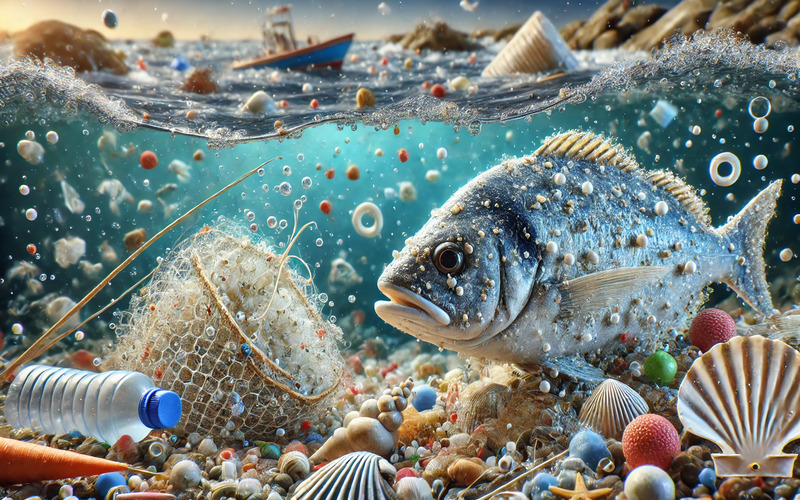
Chamberlains of London – The discovery of microplastics in seafood has raised alarm worldwide. As these tiny plastic particles infiltrate marine ecosystems, they find their way into the food chain, ultimately reaching human plates. This contamination is not just an environmental concern but also poses significant health risks. Understanding how microplastics in seafood, their impact on human health, and what can be done to mitigate the issue is crucial for preserving both our environment and our well-being.
Microplastics originate from the breakdown of larger plastic waste or are manufactured as tiny particles used in industrial applications and personal care products. These particles are carried into oceans through rivers, sewage systems, and other waste streams, contaminating marine environments on a massive scale.
Marine organisms, such as fish, shellfish, and plankton, ingest microplastics in their habitats. Plankton, being a primary food source for many marine species, often becomes the starting point of microplastic contamination in the food chain. Shellfish, which filter large volumes of water to feed, directly absorb microplastics suspended in the ocean. As these contaminated organisms are consumed by larger predators, including humans, microplastics accumulate in their bodies and subsequently enter human diets.
“Also Read: How to Reheating Seafood Without Losing Its Flavor and Texture”
The potential health risks of ingesting microplastics remain a topic of ongoing research, but early findings highlight several concerns. Microplastics are not biodegradable and may carry harmful chemicals, such as pesticides, heavy metals, and industrial pollutants. When consumed, these toxic substances may leach into the human body, potentially causing long-term health issues.
Microplastics are also suspected of contributing to inflammation and damage in the digestive system. As non-digestible particles, they can irritate the gut lining, potentially leading to chronic conditions. Furthermore, certain plastics release endocrine-disrupting chemicals, such as bisphenol A (BPA), which interfere with hormone regulation. This disruption can have far-reaching consequences, including reproductive issues, developmental delays, and metabolic disorders.
The presence of microplastics in oceans has profound ecological consequences. They not only disrupt marine food chains but also degrade natural habitats. Coral reefs, for example, are particularly vulnerable to microplastic pollution, as these particles can block sunlight and hinder coral growth. Such damage affects biodiversity and the balance of marine ecosystems.
As ecosystems deteriorate, the economic and social consequences become evident. Many communities rely on fishing as their primary source of food and income. The contamination of seafood by microplastics not only threatens marine life but also undermines the livelihoods of these communities. Over time, the cascading effects of environmental degradation further amplify the health and economic risks for humanity.
“Also Read: Calorie-Tracking Applications: How Effective Are They?”
Addressing the issue of microplastic contamination requires a unified effort from governments, industries, and individuals. Governments need to enforce stricter regulations on plastic production and waste management to prevent plastics from entering marine ecosystems. Industries must invest in sustainable alternatives to plastic and adopt circular economy practices to minimize waste.
On an individual level, reducing reliance on single-use plastics is a critical step. Simple actions, such as using reusable bags, bottles, and containers, can significantly reduce plastic waste. Raising awareness through education and advocacy can also empower more people to adopt environmentally friendly behaviors and support policies aimed at reducing plastic pollution.
Microplastics represent a growing crisis that impacts both the environment and human health. While their presence in seafood underscores the urgency of this issue, it also provides an opportunity to reflect on the broader challenge of managing plastic waste. By taking collective action to address microplastic pollution, we can protect marine ecosystems, safeguard human health, and ensure a sustainable future for generations to come.